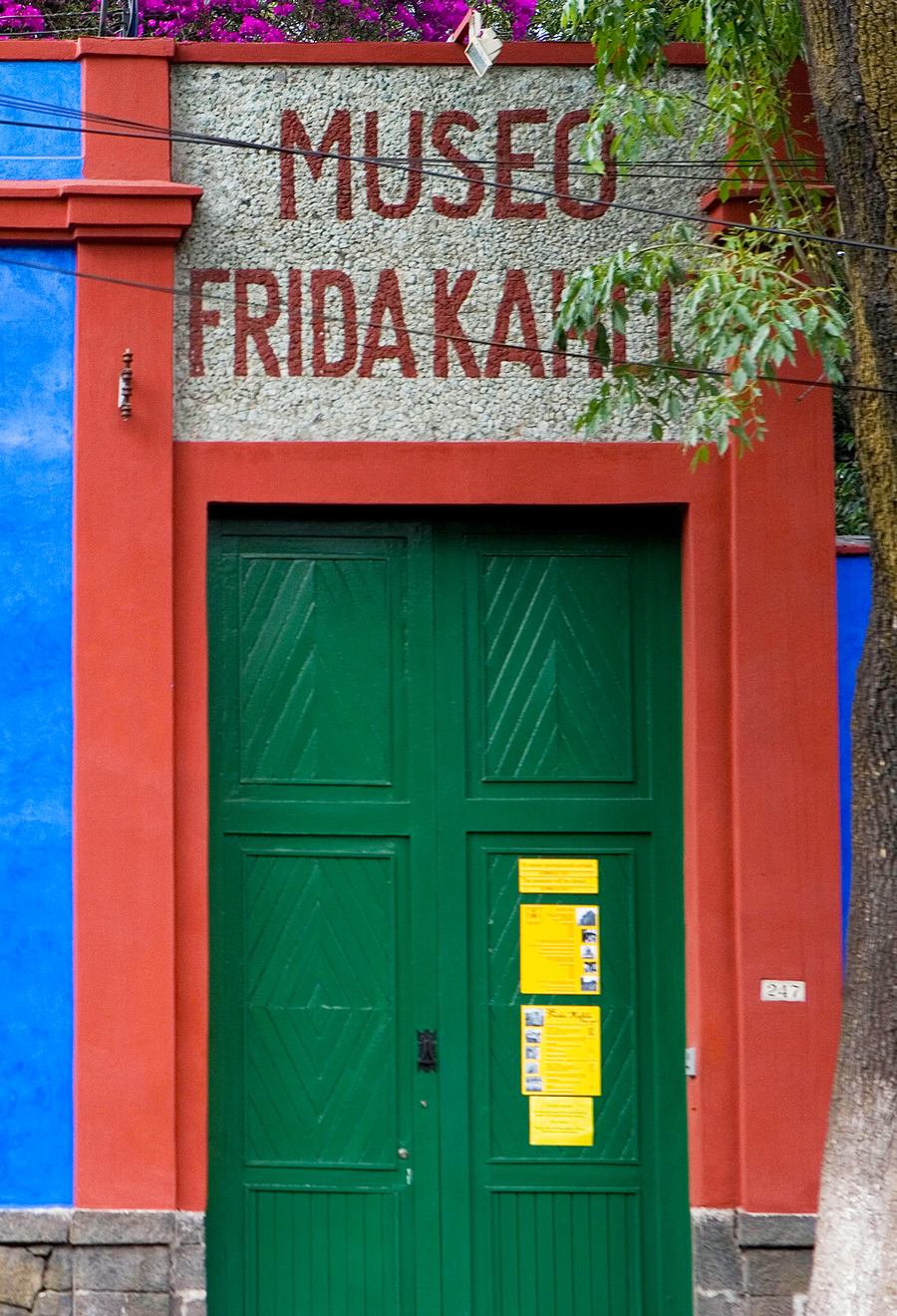Visiting an artist’s former residence sheds light on their creative process and the surroundings that inspired their most famous works, from novels to paintings, songs, and films. When visiting these museums, guests can peruse decades of artifacts and memorabilia — whether that’s Ernest Hemingway’s former typewriter or Elvis Presley’s first guitar — and learn more about their lives and legacy. Here are six incredible homes of famous artists you can visit across North America.
Hemingway Home and Museum – Key West, Florida
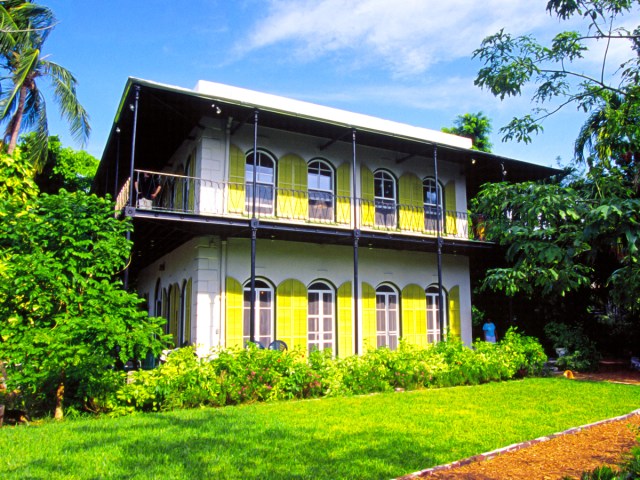
After leaving Paris in the 1920s, Ernest Hemingway traded the City of Light for the palm trees of Key West and moved into this Spanish colonial mansion on Whitehead Street. Gifted to Hemingway by his second wife’s uncle, the house was where the American author wrote his 1929 novel A Farewell to Arms, along with parts of Death in the Afternoon and For Whom the Bell Tolls. And it was while living in this house that Hemingway took up a new obsession that he later became famous for: deep sea fishing.
Today, the house is open to the public and filled with Hemingway memorabilia, including his typewriter and some 60 cats — supposedly the descendants of Hemingway’s original feline friends. Also of note is Hemingway’s luxurious pool nestled among the tropical plantings — when he built it at enormous cost in the 1930s, it was the only residential in-ground swimming pool within a hundred miles.
Elvis Presley Birthplace – Tupelo, Mississippi
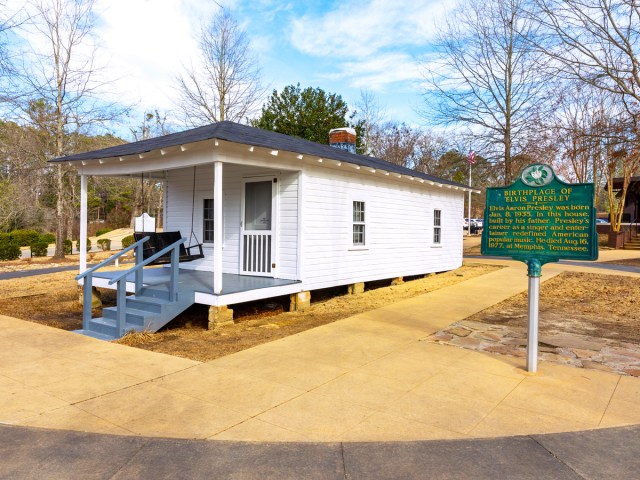
While Elvis Presley’s most famous residence is a Memphis mansion called Graceland — now a National Historic Landmark — the musician’s life began in a humble two-room shotgun house in Tupelo, Mississippi. Months before Presley’s January 1935 birth, his father, Vernon, built the house with relatives after securing a $180 loan. However, the Great Depression meant that the family could no longer afford to live there, and they moved out by the time the future superstar turned three.
Today, the Elvis Presley Birthplace belongs to a 15-acre park that includes the Assembly of God Church — where the entertainer learned to love gospel music — a museum, and the Fountain of Life, where 13 upper and 29 lower waterspouts signify Presley’s years in Tupelo and Memphis, respectively. A bronze statue captures Presley toting his first guitar, a purchase his mother, Gladys, made at a Tupelo hardware store. Visitors flock to see the “X” where Presley stood when he first held the instrument that went on to change music history.
Frida Kahlo Museum – Mexico City, Mexico
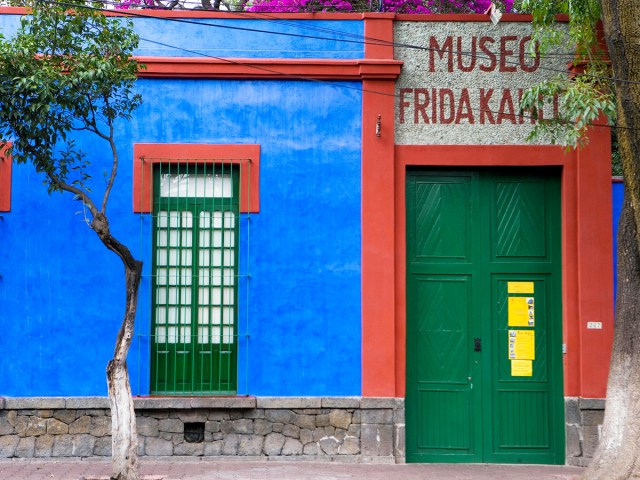
As soon as you see the brilliant cobalt blue exterior of the Frida Kahlo Museum, you’ll understand why locals refer to it as “la Casa Azul” (the Blue House). The legendary Mexican artist grew up in the home built by her father in 1904, and later shared it with her equally influential artist husband Diego Rivera. After Kahlo’s death in 1954, Rivera donated the home and its contents, establishing what is now one of Mexico City’s most visited and treasured museums.
The 10-room museum — which envelopes an airy courtyard decorated with lava rock, cacti, and tropical foliage — is located in the Colonia del Carmen area of the Coyoacán neighborhood. It features a handful of works by both Kahlo and Rivera, but mainly highlights their personal effects: her signature Tehauna-style dresses, the couple’s impressive collection of Mexican folk art, a great number of pre-Hispanic artifacts, and even Kahlo’s recipe for mole sauce. Kahlo and Rivera’s marriage was famously contentious, but the museum offers a fascinating peek at the lifestyle of two of Mexico’s most enduring artists.
Edgar Allan Poe House and Museum – Baltimore, Maryland

In 1941, the West Baltimore row home Edgar Allan Poe lived in from 1833 to 1835 was nearly demolished. The beloved author and poet occupied the house — a small, brick duplex with five rooms across 2.5 stories — with his aunt, grandmother, and two cousins when he was in his 20s. Though Poe resided there for only about two years, he wrote several stories and poems in the house before moving to Richmond, Virginia.
Fortunately, the Edgar Allan Poe Society of Baltimore convinced the city to preserve the house, and after years of negotiations and renovations, it opened to the public in 1949 — just in time for the centennial of Poe’s death. Today, the well-maintained home, though unfurnished, features original horsehair plaster walls, brick fireplaces, and uneven wooden plank flooring. Inside, visitors can peruse a small collection of Poe ephemera, including his portable writing desk and his aunt’s china. The space also features various exhibitions and events that shed additional light on one of America’s most revolutionary storytellers.
Georgia O’Keeffe Museum – Santa, Fe New Mexico
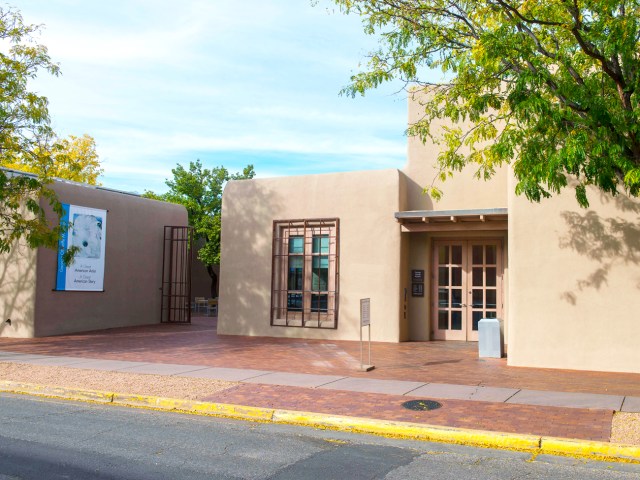
Famous for her depictions of flowers, animal skulls, and southwestern landscapes, 20th-century painter Georgia O’Keeffe was a trailblazer of American modernism. In the 1920s, she became the first female artist to make a splash in the art world of New York City. Her former residence lies on a 12-acre parcel of land in northern New Mexico. The entire 21,000-acre property was part of a dude ranch called Ghost Ranch when O’Keeffe bought her plot in 1940.
Although you cannot get a tour of O’Keeffe’s home, you can still visit the Ghost Ranch, which today serves as a retreat center, offering horseback riding, classes, and tours. Her museum in Santa Fe displays over 3,000 of O’Keeffe’s works, including 140 oil paintings. O’Keeffe’s two homes in New Mexico are also maintained by the museum.
Jack London State Park – Glen Ellen, California
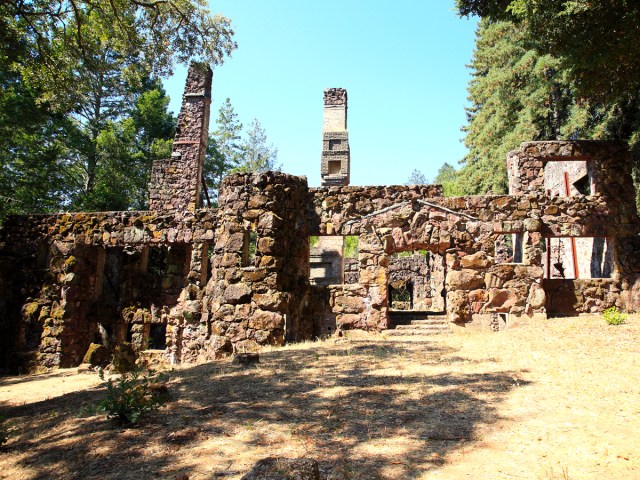
Known for novels like The Call of the Wild and White Fang, Jack London was one of the most successful American authors of the early 20th century and an outspoken social activist. London grew up in the Bay Area and didn’t look far when he wanted to build himself a bucolic escape later in life. Named Beauty Ranch, the impressive site was located just 60 miles north of San Francisco in the picturesque town of Glen Ellen, in the Sonoma Valley. London lived there until its death, and in 1959 the property was given to the state of California.
More than 800 acres have been preserved as Jack London State Historic Park. On the grounds, visitors can tour London’s cottage, a second house which he used as a study to write in, and the ruins of a third — the “Wolf House” — which the London family had intended to move into before it tragically burned down.
More from our network
Daily Passport is part of Inbox Studio, which publishes content that uplifts, informs, and inspires.






